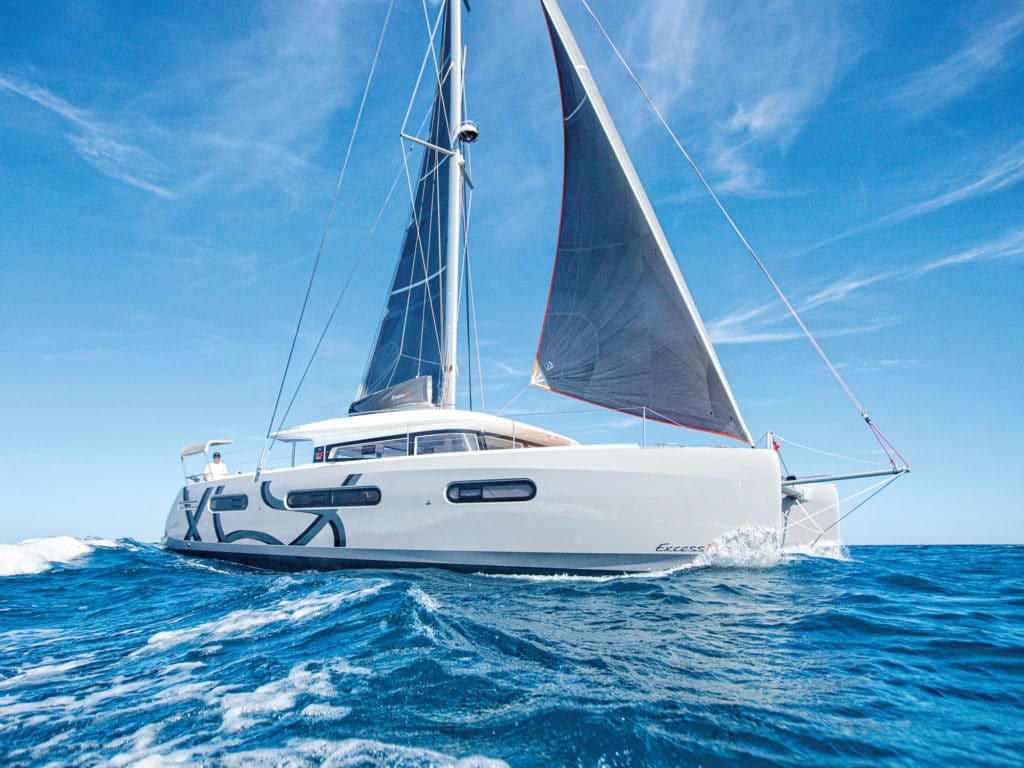
Excess catamaran 15. Excess world and explore perfectly designed catamarans inspired by racing for cruising pleasure.
Right up front, let me say three things about the new Excess 15, which I got to sail with my Boat of the Year colleagues this past fall in ocean waters off Fort Lauderdale, Florida: It’s a big, roomy cruising cat that’s super easy to handle and really fun to sail. OK, make it four things: We all liked the boat. A lot.
Excess Catamarans is a new brand, just two years old, launched by French builder Group Beneteau, and designed to reach a segment of the multihull market where it saw an opening: namely monohull sailors who appreciate the actual sailing aspect of cruising but who are open to the creature comforts a multihull has to offer.
Hey, that’s me!
I do the majority of my sailing on a single hull. I appreciate the thrill when the rail occasionally dips into the water. I like the feedback that I get from the wheel, the water rushing past, a little spray in my face from time to time. But then again, some of my favorite adventures have taken place on two hulls. Lounging on the tramp in a pretty anchorage, power reaching from island to island, plenty of room to take family and friends along, private cabins and multiple spaces to gather—what’s not to like about those aspects of a cruising cat?
I found that the Excess 15 borrowed liberally from both worlds. It is spacious, can be loaded up with options, and everybody aboard is going to want to take a turn at the wheel. Trust me on this; the 15 is downright sporty to drive, especially with the code zero unrolled.
The boat’s standard configuration is a square-top main and self-tending jib, but Excess also offers what it calls its Pulse package, with a 3-foot-taller mast, bowsprit and code zero set on a continuous-line furler. We got to sail this power-packed solent-rig version, and it’s the one I’d consider if I were writing a check.
Upwind, the self-tending jib makes the boat simple to singlehand. In 10 to 12 knots of wind, the speedo hovered in the high 7-knot range, and tacking required only a turn of the wheel and adjustment of the Harken electric traveler. When we bore off onto a reach, we lost a knot or so of speed, but conditions were perfect to furl the jib and deploy the big reacher. Immediately, the speedo jumped to 10 and change, and off we went.
I found that the locations of the twin wheels—aft and outboard on either transom—were also a value add. I’ve sailed aboard cats with the helm on a flybridge or raised seat adjacent to the aft bulkhead, and I’ve felt disconnected from the water, and sometimes the rest of the crew if they’ve wandered off to some other corner of the boat. On the Excess, the interaction with others on board seemed more monohull-like, with everyone in the cockpit and within earshot.
RELATED: Beneteau Oceanis Yacht 54 Boat Review
Said cockpit features an inviting dining table to port surrounded by an L-shaped couch, a large lounge opposite, and a padded bench seat across the transom between fold-down helm seats. Overhead, the center of the Bimini slides open to let the sunlight pour in, and provides an excellent view of the mainsail while underway. On the boat we sailed, cockpit gatherings were further encouraged by adding a sink, fridge and ice maker to the amenities.
In the saloon, glass windows all around and a large slider door aft offer a 360-degree look at the world, while also providing relatively good visibility forward from the helms. An L-shaped galley with sink, stove, oven and microwave is located in the aft port corner of the main cabin; opposite is a drawer-style fridge and freezer, with more counter space above them. A second large table and another L-shaped couch are forward.
The boat we sailed had a traditional three-cabin layout, with the owner’s quarters occupying the starboard hull; two en suite guest cabins filled the port hull, along with another freezer amidships. The boat can also be configured with four en suite berths, or with six cabins and six heads (two additional crew berths are available in the forepeaks), which should prove popular with the charter crowd.
The base price for the 15 is $737,000, but the boat we sailed, delivered to the US and loaded with options—including a bow thruster and FLIR cameras—is right around $950,000, reflecting the benefits and costs of living and sailing to excess.
Mark Pillsbury is CW’s editor.








